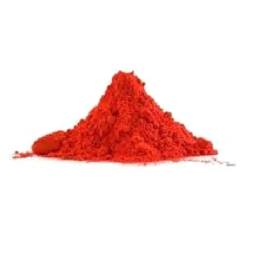Gidc Industrial Estate, Ankleshwar, Gujarat
- GST NO. : 24AABCA6649R1Z5
Everything You Need To Know About Scarlet Solvent Dyes
Posted by Admin on April, 30, 2022

The world of dyes and pigments is vast, with many colour varieties meeting the demands of various industries and trades. Acid dyes, core dyes, solvent dyes, lake colours, and pigments are just a few of the many colours offered by black solvent dye providers.
What Is A Solvent Dye?
When mixed with an organic solvent, the dyeing process takes place in a solution. Because Scarlet Solvent Dyes have extremely little or no polarity, the dyeing procedure does not require ionisation, as it does with acid dyes. In most cases, solvent colours are insoluble in water. Petrol is a common organic solvent used with non-polar solvent colours.
Solvent Types: A solvent's chemical structure determines its chemical categorization.
Hydrocarbon solvents are divided into three sub-groups depending on the nature of the "carbon skeleton" in their molecules, resulting in the aliphatic, aromatic, and paraffinic solvent families. A typical example of a hydrocarbon solvent is paint thinner.
Oxygenated solvents are created chemically from olefins (oil or natural gas), yielding the following sub-groups: alcohols, ketones, esters, ethers, glycol ethers, and glycol ether esters. When the human species consumes fat, it naturally creates ketones.
Halogenated solvents include a halogen, such as chlorine, bromine, or iodine. Many people are familiar with perchloroethylene, a highly powerful solvent utilized in dry cleaning.
Uses & Benefits:
Solvents are essential to the effectiveness of several items that customers use on a daily basis -
● Solvents in Paints and Coatings -
Solvents in paints dissolve or diffuse the components employed in the paint composition, allowing the paint to have the correct consistency for the application while avoiding clumps or globs. Some spray paints contain glycol ether esters to keep them from drying in mid-air. Because of the delayed evaporation of this potent group of solvents, cars, for example, can receive multiple smooth, perfect layers of paint for a more attractive, long-lasting finish.
● Solvents in Inks -
Many inks, which are used to print everything from periodicals to food packaging and labels, rely on solvents to be correctly placed, stay in place, and produce vibrant colours. Because it dissipates quickly to minimize smudging and residual toluene is conveniently recycled, the hydrocarbon solvent toluene is employed as the ink solvent in a single category of magazine printing.
● Solvents in Cleaning Products -
As an active ingredient of heavy-duty glass, floor, and other hard surface cleaning formulas, glycol ethers are extremely effective. These solvents are water-compatible, have a high solvent capacity for greases and oils, and are biodegradable.
● Solvents in Healthcare Applications -
As an active ingredient of heavy-duty glass, floor, and other hard surface cleaning formulas, glycol ethers are extremely effective. These solvents are water-compatible, have a high solvent capacity for greases and oils, and are biodegradable.
● Solvents in Automotive -
Solvents aid in the removal of dirt and grime from the windshield. Isopropyl alcohol is used as a windscreen de-icing and washing solvent because it remains liquid at temperatures well below the freezing point of water, assisting in the removal of ice. It eliminates spots from windshields and is also used in residential window cleaning products.
Tires are manufactured using aliphatic hydrocarbons. The solvent softens and cleans each rubber layer before applying the next one, and its adhesive properties aid in the bonding of the tire's numerous components for greater safety and performance.
Scarlet Solvent Dyes are subject to a number of federal and state rules, including those governing industrial storage and disposal of hazardous wastes, workplace exposure limits, standards for safe transit of chemical compounds, and regulations governing chemical discharge to air, land, and water.
This entry was posted on April, 30, 2022 at 11 : 41 am and is filed under Solvent Dyes. You can follow any responses to this entry through the RSS 2.0 feed. You can leave a response from your own site.
Search
Category
Recent Posts
- Applications & Widely Applicable Features Of Proprietary Mixed Solvent Dyes
- What Is The Use Of Methylene Blue Zinc Free Solvent Dyes?
- Everything You Need To Know About Scarlet Solvent Dyes
- Applications & Widely Applicable Features of Proprietary Mixed Solvent Dyes
- How Should You Select Solvent Dyeing Manufacturers?


